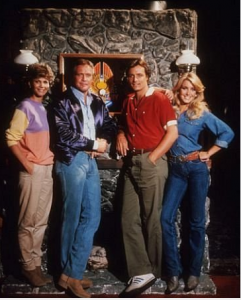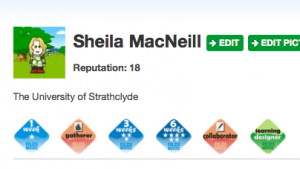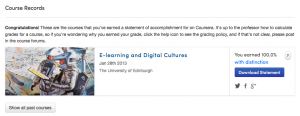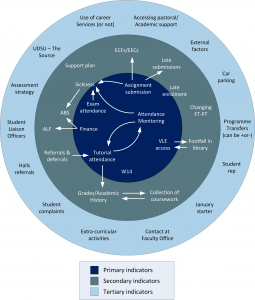So #edcmooc is now over, our digital artefacts have been submitted and reviewed and we all now move on.
I thought it would be useful to reflect on the final submission and peer review process as I have questioned how that would actually work in a couple of earlier posts. The final submission for the course was to create a digital artefact which would be peer reviewed.
The main criteria for creating the artefact were:
* it will contain a mixture of two or more of: text, image, sound, video, links.
* it will be easy to access and view online.
* it will be stable enough to be assessed for at least two weeks.
We had to submit a url via the Coursera LMS and then we were each assigned 3 other artefacts to assess. You had the option to assess more if you wished. The assessment criteria were as follows:
1. The artefact addresses one or more themes for the course
2. The artefact suggests that the author understands at least one key concept from the course
3. The artefact has something to say about digital education
4. The choice of media is appropriate for the message
5. The artefact stimulates a reaction in you, as its audience, e.g. emotion, thinking, action
You will assign a score to each digital artefact
0 = does not achieve this, or achieves it only minimally
1 = achieves this in part
2 = achieves this fully or almost fully
This is the first time I’ve done peer review and it was a very interesting process. In terms of the electronic process, the system made things very straightforward, and there was time to review draft submissions before submitting. I’m presuming that artefacts were allocated on a random basis too. On reflection the peer process was maybe on the “lite” side, but given the scope and scale of this course I think that is entirely appropriate.
My three allocated artefacts were really diverse both in style, content and substance. Whilst reviewing I did indeed reflect back on what I had done and wished I had the imagination and time of some of my peers, and I could have spent hours going through more but I had to stop myself. Overall I am still satisfied with my submission which you can explore below or follow this link.
2/2 all round for me and some very positive comments from my peers, so thank you – although as one of my reviewers did point out I maybe did push the time limits a bit far:
“The choice of the media is also apt but I guess the only little drawback is that the artifact far exceeds the guidelines on how big the artifact should be (actually it’s a gist of the entire course and not a little five-minute artifact!). “
Overall I really enjoyed #edcmooc, it made me think about things from different perspectives as well as confirming some of my personal stances on technology in education. It was well paced and I liked that it used openly available content where possible. Now I’m bit more experienced at MOOC-ing didn’t take up too much of my time. The course team made some subtle adjustments to the content and instruction over the duration which again was entirely appropriate and showed they were listening if not talking to everyone. I didn’t feel a lack of tutor contact, but then again I didn’t interact in the discussion spaces as much as I could have, and this is also an topic area where I was relatively comfortable exploring at my own pace.
It’s also been quite a counter balance to the #oldsmooc course I’m also doing (which started before #edcmooc and finishes next week), but I’ll share more about that in another post.
Also feel free to assess my artefact and share your comments here too using the criteria above.
**Update, I’ve just received an email from the course team. Apparently the process didn’t work as smoothly for some as it did for me. They are investigating and encouraging people who couldn’t share their artefacts to use the course forums. Hopefully this will get sorted soon.
![]()



